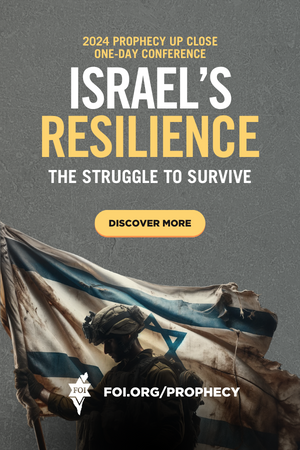Two Faces of the Middle East
The trees look a bit better along Dizengoff Street in Tel Aviv these days. New leaves have sprouted on limbs that were denuded of foliage when a mad bomber from Hamas triggered an explosive device that shredded bodies, buses, and buildings along the city’s busiest thoroughfare. On a week dedicated to festive celebration of peace with Jordan, the suicide bomber succeeded in blowing away not only the joy associated with the signing, but also Tel Aviv’s sense of immunity from such terrorist attacks.
Somewhere among the crags and crannies of the wilderness in the south of Israel lie the shriveled remnants of the gaily colored balloons that floated into the skies above the Arava as the official papers proclaiming peace between Israel and Jordan were signed. President Clinton and his entourage of well over a thousand friends and dignitaries have long since returned to the United States to face far less comfortable political circumstances in their own country. And with the departure of the Americans and notables from other countries, Israel and Jordan—who seemed at times to be incidental to the media extravaganza that featured the U.S. head of state and his wife—go about the tough business of making their paper of peace a functioning reality.
I was in Israel during the momentous week when the second of Israel’s neighbors decided it was time to put down the sword and seek a genuine remedy for the plague of a perpetual state of war between the two countries. As a matter of fact, we arrived at Ben Gurion Airport only a few hours after the attack in downtown Tel Aviv that swept 23 innocent people into eternity and over 50 others into hospital trauma centers, plunging the city into a fit of depression. In these events we see something that surfaces frequently in the Middle East and once again illustrates the stark contrasts in that place of perpetual contradictions—in this case, the two faces of the Middle East. One visage shines with hope and confidence that better things are on the way. The other has darker features and pulses with hatred and malicious intentions.
The Peace Dividend
Unlike the porous peace accords between Israel and Yasser Arafat’s PLO, the agreement with Jordan has all the earmarks of a genuine peace. Both sides will reap significant benefits from the handshakes in the desert.
From Jordan’s point of view, the agreement with Israel opens new economic vistas and promises greater political stability. Most obvious is, of course, the cessation of the state of war with Israel. And while the Syrians, now pressured to move toward an agreement, are obviously not pleased with fundamental aspects of the deal, Jordan no longer has a need to maintain a strong tie to Iraq.
Mutually recognized borders are another plus. The lines drawn by the British during the mandatory period following World War I approximate the new boundaries. In some instances, what is now recognized as Jordanian territory falls in areas being farmed by Israelis. In such cases, the land will now be leased from Jordan by the same people; thus, Israelis will profit from produce sales while Jordanians collect land lease fees. Shared water, tourism, and cooperative economic initiatives all serve to sweeten the arrangements for both sides.
But for King Hussein of Jordan, three results of the peace accord with Israel are very large windfalls. First, the United States has agreed to waive $700 million in foreign debt, and it is reported to have promised another $200 million in annual aid over the next five years, Next, the agreement, in principle, will allow 250,000 Palestinian refugees to return to the West Bank from Jordan and, in so doing, help remove the threat to Hussein’s authority posed over the years by displaced Palestinians. Also, the king has been granted special status with regard to the Islamic shrines in Jerusalem—a move that brought great consternation to Arafat, as it enhanced Hussein’s position and prestige.
For Israel, peace with Jordan means that first and foremost one more threat to her existence has been eliminated. Syria is now under pressure to get serious and begin discussions that will move beyond President Assad’s implacable demands for Israel to give up everything, notably the entire Golan Heights, before he is even willing to talk. Lebanon, Israel’s neighbor to the north, will get serious when Syria’s Assad does. That ravaged nation has been virtually annexed and is therefore controlled by Syria.
Many Arab nations are now lining up to make their deals with Israel.
Morocco has already made the move. Cessation of a state of belligerency brought down the historic Arab economic embargo. This in itself has great potential for the Israeli economy and, in a significant way, exemplifies the bright side of the Peace Dividend.
Our Option Is Jihad
On November 11, 1994, a man riding a bicycle with a bomb strapped to his body rode into an Israeli checkpoint at a main intersection near an Israeli settlement on the north-south highway in Gaza. Once in the intersection, the cyclist triggered the device and killed himself and three Israeli soldiers. Another dozen Israeli and Palestinian passersby were wounded. The cyclist was a member of the militant Islamic fundamentalist group that is a sister organization to Hamas, the group responsible for suicide bombings in Tel Aviv and other parts of the country.
Since the rash of suicide bombings began, many Americans are asking who these people are and why they are willing to kill themselves as they vent their hatred for Israel and its Jews. Statements by high U.S. officials to the effect that “Religion is not a problem in the Middle East” notwithstanding, these terrorists are driven by what they see as a consuming passion for Islam and their god, Allah. The very name for the Hamas organization, born in 1987, means zeal.
According to an article in U.S. News and World Report (October 31, 1994), funding for Hamas “comes from Iran and Saudi Arabia; private funds come from many countries—I including the United States. Training comes from, among others, Iranian-backed Hezbollah radicals in Lebanon and the Islamic Sudanese government.” Inasmuch as Lebanon and Hezbollah terrorists are under the control of Assad of Syria, one must question just how serious Assad is about real peace with Israel. It is ominously enlightening to learn that more than 12 different Hamas-style Palestinian terrorist organizations—known to U.S. and Israeli intelligence and controlled by the Mullahs in Iran—flourish in Damascus, Syria.
With these facts in mind, consider the potential for disaster should American troops be placed between Israelis and Syrians on the Golan Heights. Such an offer was made by U.S. Secretary of State Warren Christopher last October. He told NBC television, “If the parties reach an agreement, if there is a withdrawal, and they ask for some sort of international force there, the United States will be prepared to participate.”
Should American troops be placed on the Golan Heights, they would immediately become the target of every Islamic fundamentalist terrorist group itching to bring glory to Allah by striking at the “Great Satan.” This is precisely what happened in Lebanon in 1983–84 when more than 400 American and French military personnel were killed by Islamic suicide bombers. Today in Algeria, Islamic extremists are killing French authorities in an attempt to drive them out and create an Iranian-style Islamic state. It is difficult to imagine how American men and women could be adequately protected against such attacks on the Golan. It is less difficult to see how the relationship between Israel and her protector ally, the United States, could be disrupted should any Americans die on the Golan.
There are few instruments of destruction known to man as formidable and tenacious as demented religious zealotry. Because Hamas and its fellow travelers are textbook examples, it is essential that their goals be identified and people, particularly those with goodwill toward other human beings, understand who they are and what they seek. And so, from their own mouths in “The Covenant of the Hamas,” we cite a number of the organization’s fundamental beliefs and objectives.
Exclusive Moslem Nature of the Area:
“The land of Palestine is an Islamic Waqf [Holy Possession] consecrated for future Moslem generations … until Judgment Day. No one can renounce it or any part, or abandon it or any part of it” (Article 11).
The Destruction of Israel:
“Israel will exist and will continue a to exist until Islam will obliterate it, a; just as it obliterated others before it” (Preamble).
Call to Jihad [Holy War]:
“The day the enemies usurp part of Moslem land, Jihad becomes the individual duty of every Muslim. In the face of the Jews’ usurpation, it is compulsory that the banner of Jihad be raised” (Article 15).
Rejection of Negotiated Peace Settlement:
“[Peace] initiatives, and the so-called peaceful solutions and international conferences are in contradiction to the principles of the Islamic resistance movement … Those conferences are no more than a means to appoint the infidels as arbitrators in the lands of Islam … there is no solution for the Palestinian problem except by Jihad. Initiatives, proposals and international conferences are but a waste of time, an exercise in futility” (Article 13).
Anti-Semitic Incitement:
“The Day of Judgment will not come about until Muslims fight Jews and kill them” (Article 7).
When Israel embarked on its long road toward peace, everyone knew that it would be a perilous and perhaps bloody journey. To most who knew the issues well, the peace process boiled down to two options: success or, eventually, war. And while the end of the road has by no means been found, we earnestly pray and labor to seek “the peace of Jerusalem” (Ps. 122:6).








